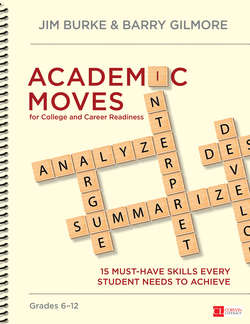Читать книгу Academic Moves for College and Career Readiness, Grades 6-12 - Jim Burke - Страница 19
На сайте Литреса книга снята с продажи.
Student Example 2: Analyzing Visual Text
ОглавлениеIt was the 2005 movie version of Pride and Prejudice that helped ninth grade student Gaby decide to read the book with a literature circle group in her English class. Once she did, however, she found the novel itself equally rewarding.
Gaby’s English teacher had planned the group reading selections to be sure that each book had an easy-to-find movie interpretation available. The assignment she gave—to watch a key scene and analyze it—could easily have been framed as a compare-and-contrast exercise (and would still have addressed the seventh common core reading standard). As a starting place, however, the teacher wanted Gaby and her peers to focus closely on the craft of the video itself, not merely on plot differences.
After modeling a “close reading” of a movie scene with her students and discussing choices made by the director and actors, Gaby’s teacher made an anchor chart—a reference tool for the class that could be posted on the wall as an ongoing reminder—of video techniques and tools and placed it on her wall.
Then, she had the students get to work. Here is Gaby’s response:
The movie exaggerates Lizzy’s resistance to Mr. Collins in the scene where he proposes. The actress holds onto Jane’s arms and begs her not to go, and she mouths “please” to her father as her final plea before they all leave her alone with Mr. Collins. Mr. Collins also gives Lizzy a wildflower in the movie, which symbolizes his simple love for her; however, Lizzy does not want simple love; she wants a complex and deep connection. In the novel, Lizzy sits patiently and listens to the proposal, but in the movie, she constantly tries to interrupt. The camera frames Lizzy awkwardly in the center of the shot for the first part of the scene and then cuts to an over-the-shoulder view when Mr. Collins kneels to propose—she freaks out when he kneels in front of her; then she cuts him short and storms out of the room. Because of the assertiveness and anger that the movie Lizzy portrays, the audience is supposed to understand all of the forcefulness of her character. Through the novel, readers interpret Lizzy’s refusal however they want to, but the movie makes her sound very forceful, strong, and independent. I think the directors/producers wanted the audience to know that Lizzy is not the typical “I want to get married and have a steady life with an okay husband,” but she really wants love and connection in her marriage, and that sets her apart from the rest of her family and the girls of that era.
